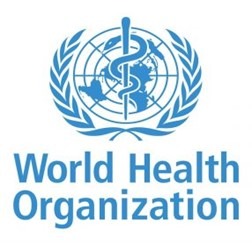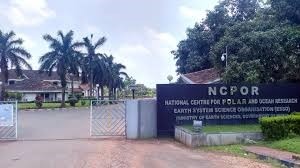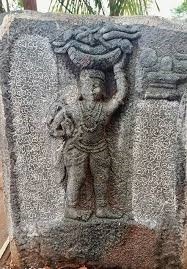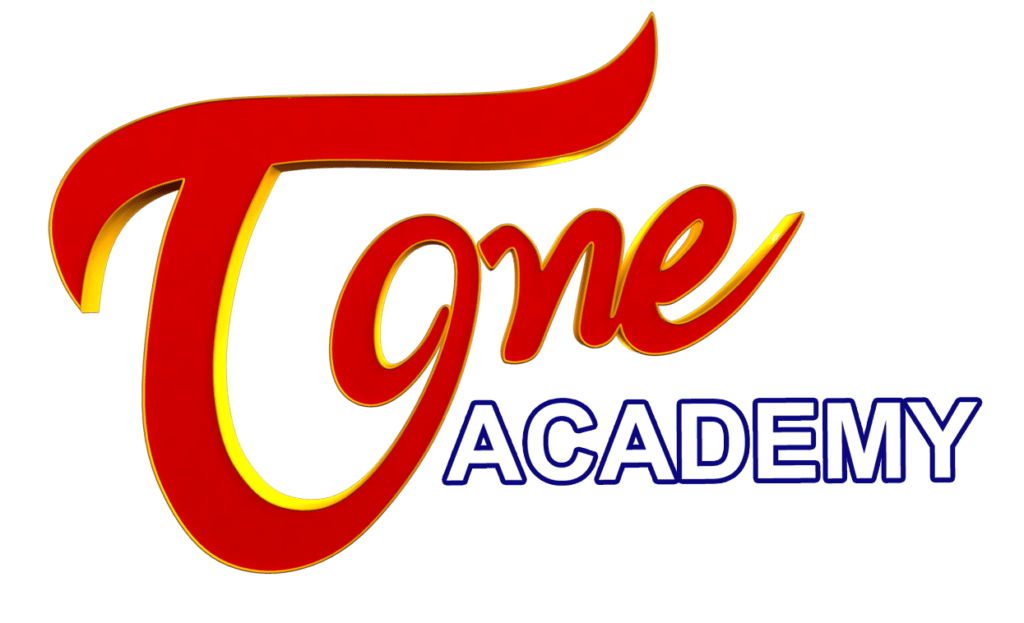India Post Payments Bank Collaborates with Aditya Birla Capital to Enhance Access to Loan Products Nationwide
Syllabus:Economy
- India Post Payments Bank (IPPB), a Government of India undertaking, has partnered with Aditya Birla Capital Ltd.
- (ABCL), a leading financial services company, to improve access to loan products across India, particularly in rural and underserved areas.
- Under this collaboration, IPPB will provide referral services for ABCL’s loan offerings, including personal loans, business loans, and loans against property.
- Customers will benefit from quick approvals, minimal documentation, and hassle-free disbursements through IPPB’s digital platforms.
- The initiative uses AI and data analytics to offer personalized financial solutions tailored to individual needs.
- IPPB was established on 17 August 2016, is headquartered in New Delhi, and is led by MD & CEO Mr. R. Viswesvaran.
With reference to the partnership between India Post Payments Bank (IPPB) and Aditya Birla Capital Ltd. (ABCL), consider the following statements:
- The partnership allows IPPB to directly disburse loan amounts to customers from its own corpus.
- ABCL’s loan products will be accessible through IPPB’s digital channels in both urban and rural areas.
- The use of AI and data analytics in this partnership aims to ensure credit allocation based solely on income tax records.
Which of the statements given above is/are correct?
A. 2 only
B. 1 and 3 only
C. 2 and 3 only
D. 1, 2 and 3
Answer:A
Explanation:
- Statement 1 is incorrect: IPPB acts only as a referral partner, not a lending institution in this context.
- Statement 2 is correct: The partnership is designed to reach both urban and rural populations via IPPB’s digital network.
- Statement 3 is incorrect: AI-driven personalization considers multiple data sources, not just income tax records.
Government to Play Key Role in New Payments Regulatory Board
Syllabus: Economy
- The Central Government has notified the Payments Regulatory Board Regulations, 2025, establishing a Payments Regulatory Board (PRB) to replace the Board for Regulation and Supervision of Payment and Settlement Systems (BPSS)—previously a committee under the RBI Central Board.
About the PRB
- Statutory Basis: Established under Section 3 of the Payment and Settlement Systems Act, 2007.
- Assisted by: The Department of Payment and Settlement Systems (DPSS) within the RBI.
Board Composition
- Chairperson: RBI Governor
- Members:
- RBI Deputy Governor (in charge of payment and settlement systems)
- One RBI officer nominated by the Central Board
- Three members nominated by the Central Government
- Experts in payment systems, IT, law, etc., may be invited (permanent or ad hoc)
- RBI’s Principal Legal Adviser is a permanent invitee
Voting and Decision-Making
- Total 6 voting members (3 RBI + 3 Government)
- RBI Governor holds a casting vote in case of a tie
- Each member has one vote
- Decisions passed by majority vote
- Meetings and Delegation
- Minimum of two meetings annually
- Chaired by Governor or Deputy Governor (in absence)
- Board may delegate powers to sub-committees, members, or RBI officers
- Eligibility Criteria for PRB Members
- Must be below 70 years
- Cannot be a sitting MP or MLA
- Must not have material conflict of interest with any payment system
- Background and Rationale
- A 2017 committee recommended an independent PRB with a Chairperson appointed by the Government in consultation with the RBI.
- RBI opposed the idea of an external regulator, insisting the Governor head the PRB and retain the casting vote.
- The final structure aligns with RBI’s proposal, ensuring regulatory oversight remains within the RBI framework.
Strategic Importance
- The PRB is expected to bring a holistic perspective by including members with expertise in technology and payment systems.
- It will act as a coordinating body across departments like Fintech and DPSS, promoting uniform standards across the digital payments ecosystem.
With reference to the partnership between India Post Payments Bank (IPPB) and Aditya Birla Capital Ltd. (ABCL), consider the following statements:
- The partnership allows IPPB to directly disburse loan amounts to customers from its own corpus.
- ABCL’s loan products will be accessible through IPPB’s digital channels in both urban and rural areas.
- The use of AI and data analytics in this partnership aims to ensure credit allocation based solely on income tax records.
Which of the statements given above is/are correct?
A. 2 only
B. 1 and 3 only
C. 2 and 3 only
D. 1, 2 and 3
Answer:A
Explanation:
- Statement 1 is incorrect: IPPB acts only as a referral partner, not a lending institution in this context.
- Statement 2 is correct: The partnership is designed to reach both urban and rural populations via IPPB’s digital network.
- Statement 3 is incorrect: AI-driven personalization considers multiple data sources, not just income tax records.
WHO Recognises 4 Nations for Trans Fat Elimination
Syllabus:Health
Context:
- The World Health Organization (WHO) has recognized Austria, Norway, Oman, and

Singapore for successfully eliminating industrially produced trans fats from their national food supplies, setting a benchmark in public health policy.
- Understanding Trans Fats – Definition: Trans-fatty acids (TFAs) are a type of unsaturated fat.
- They occur in two forms: Naturally Occurring Trans Fats: Found in small quantities in red meat and dairy products.
- Industrially Produced Trans Fats: Created during hydrogenation, a chemical process that converts liquid vegetable oils into solid fats (e.g., partially hydrogenated oils or PHOs).
- Common Sources: Processed & fried foods (biscuits, cakes, vanaspati ghee), baked goods (pies, pastries, prepackaged dough), and cooking fats (shortening, stick margarine).
- Health Risks Associated with Trans Fats – Cardiovascular Disease: Increases LDL (bad cholesterol), decreases HDL (good cholesterol), leads to arterial plaque buildup and atherosclerosis, increasing the risk of heart attacks and strokes.
- Metabolic Disorders: Contributes to obesity due to high energy density (9 kcal/g), and prolonged consumption impairs insulin sensitivity, leading to type 2 diabetes.
- Global Burden: WHO (2024) estimates 278,000 deaths annually from trans-fat consumption, accounting for ~7% of cardiovascular-related deaths globally.
- Policy Interventions – WHO Global Strategy (2018): Aims to eliminate industrial trans fats globally by 2025, targeting 90% global and 70% regional population coverage with best-practice policies.
- India’s Regulatory Framework: FSSAI Regulation (2021) mandates edible oils and fats to contain less than 2% trans fats, effective from January 2022, aligning with WHO guidelines.
Conclusion:
- Eliminating industrial trans fats is a critical public health intervention that significantly reduces non-communicable disease burdens.
- WHO’s recognition highlights the importance of regulatory enforcement, intergovernmental collaboration, and public engagement in creating a trans-fat-free food environment.
Which of the following statements about industrially produced trans fats is/are correct?
- They are formed through the hydrogenation process which converts liquid oils into solid fats.
- They occur naturally in small quantities in red meat and dairy products.
- Partially hydrogenated oils (PHOs) are a major source of industrial trans fats.
Select the correct answer using the code below:
A) 1 only
B) 1 and 2 only
C) 2 and 3 only
D) 1, 2, and 3
Explanation:
- Statement 1: “They are formed through the hydrogenation process which converts liquid oils into solid fats. “This is correct. Industrially produced trans fats are primarily created through partial hydrogenation, a chemical process that turns liquid vegetable oils into semi-solid or solid fats.
- Statement 2: “They occur naturally in small quantities in red meat and dairy products.”This statement refers to naturally occurring trans fats, not industrially produced ones. Therefore, this is incorrect in the context of industrially produced trans fats.
- Statement 3: “Partially hydrogenated oils (PHOs) are a major source of industrial trans fats.”This is correct as a fact, but the question asks which statements about industrially produced trans fats are correct. PHOs are the source of industrial trans fats, so the statement is factually true. However, because the second statement incorrectly attributes natural trans fats to industrially produced trans fats, the combination including statement 2 is invalid.
National Centre for Polar and Ocean Research
In News Syllabus:
- The Union Ministry of Earth Sciences (MoES) inaugurated two new facilities, “Sagar Bhavan” and “Polar Bhavan,” at the National Centre for Polar and Ocean Research (NCPOR) in Goa.
- Established in 1998 as an autonomous R&D institute under MoES, NCPOR was formerly known as the National Centre for Antarctic and Ocean Research (NCAOR).

- Located in Vasco da Gama, Goa, it serves as the nodal agency for planning and executing India’s polar expeditions across the Antarctic, Arctic, Southern Ocean, and Himalayas.
- It coordinates scientific research and logistics in polar and oceanic domains and leads strategic projects such as mapping India’s Exclusive Economic Zone (EEZ), conducting continental shelf surveys, and managing the Deep Ocean Mission.
- NCPOR is guided by a Research Advisory Committee (RAC) for scientific oversight.
- Polar Bhavan, the largest facility on campus, spans 11,378 sq. m and was constructed at a cost of ₹55 crore.
- It features advanced laboratories, 55 rooms for scientists, conference halls, a library, and the Science on Sphere (SOS) 3D earth systems visualization platform.
- This building will also host India’s first Polar and Ocean Museum dedicated to public scientific outreach.
- Sagar Bhavan covers 1,772 sq. m and cost ₹13 crore.
- It houses specialized facilities including two -30°C ice core laboratories, +4°C storage units for sediment and biological samples, and a Class 1000 metal-free clean room for trace metal and isotope analysis.
- NCPOR maintains India’s scientific presence at polar stations: Maitri and Bharati in Antarctica, Himadri in the Arctic, and Himansh in the Himalayas.
- The institute’s activities are supported by key legislative frameworks such as India’s Arctic Policy (2022) and the Indian Antarctic Act (2022), which emphasize science-led, environmentally responsible polar engagement in compliance with international obligations.
Consider the following statements about the National Centre for Polar and Ocean Research (NCPOR):
- It was established as an autonomous institute under the Ministry of Earth Sciences in 1998.
- It coordinates India’s scientific research only in the Antarctic region.
- It leads strategic projects such as EEZ mapping and continental shelf surveys.
- It operates under the Indian Antarctic Act of 2022 and India’s Arctic Policy of 2022.
Which of the above statements are correct?
A) 1 and 3 only
B) 1, 3, and 4 only
C) 2 and 4 only
D) All of the above
Correct Answer: B) 1, 3, and 4 only
Explanation:
- It was established as an autonomous institute under the Ministry of Earth Sciences in 1998.” Correct – The National Centre for Polar and Ocean Research (NCPOR) was indeed established in 1998 and functions as an autonomous institute under the Ministry of Earth Sciences (MoES).
- It also coordinates scientific research and logistics in the Arctic, Southern Ocean, and the Himalayas (e.g., Arctic Station Himadri, Himalayan Station Himansh). Hence, the word “only” makes this statement incorrect.
Guttala Sculptural Inscription
Syllabus:History
- A rare 16th-century sculptural inscription discovered near the Chandrashekara temple in Guttala village, Haveri district, Karnataka, offers India’s earliest known epigraphic reference to a humanitarian crisis.

Key Features:
- Date & Language: Dated Saka 1461 (August 18, 1539 CE), the inscription is etched in Kannada script and language on a stone slab.
- Disaster Recorded: It details the death of 6,307 people due to a severe drought (referred to as “bara”)—providing both the exact toll and a contemporary social response.
- Humanitarian Response: A local man, Marulaih Odeya, son of Nanideva Odeya, buried the deceased in baskets to earn spiritual merit for the regional ruler, Timmarasa Svami.
- Sculptural Representation: The stone also features a carving of Marulaih carrying a basket filled with bodies, combining visual iconography with textual epigraphy.
- Historical Significance: This inscription serves as a unique and early documentation of a natural disaster, highlighting not only the scale of the tragedy but also the community’s humanitarian response and administrative structure, through the mention of “seeme” (territorial unit).
- This find offers valuable insights into historical climate events, social resilience, and localized governance during the 16th century in South India.
With reference to the 16th-century Guttala Sculptural Inscription discovered in Karnataka, consider the following statements:
- The inscription, dated to 1539 CE, is one of the earliest known epigraphic records of a natural disaster in India and includes both textual and sculptural depictions.
- It records a mass death caused by a flood, emphasizing the environmental challenges and hydraulic management failures of the Vijayanagara period.
- The act of burying the dead by a local individual is portrayed as a means of accruing spiritual merit on behalf of a regional ruler, indicating a linkage between social welfare and political legitimacy.
- The mention of “seeme” in the inscription reflects a formal administrative division under the Delhi Sultanate’s governance in southern India.
Which of the statements given above is/are correct?
A) 1 and 3 only
B) 1, 2, and 4 only
C) 1, 3, and 4 only
D) All of the above
Correct Answer: A) 1 and 3 only
Explanation:
- Statement 1 – Correct: The inscription is dated 1539 CE and combines textual narration and sculptural representation, making it a rare and early epigraphic account of a humanitarian disaster in Indian history.
- Statement 2 – Incorrect: The disaster mentioned is a drought, not a flood. The term used is bara (Kannada for drought), and it led to the death of 6,307 individuals.
- Statement 3 – Correct: The individual, Marulaih Odeya, buried the dead to earn religious merit for the ruler Timmarasa Svami, reflecting a cultural linkage between public service and the ruler’s dharmic legitimacy.
- Statement 4 – Incorrect: The mention of seeme refers to a local territorial unit and has no direct connection with the Delhi Sultanate. The inscription is associated with the Vijayanagara period’s local governance structures.
Niallia tiangongensis
Syllabus:Science

- Chinese scientists have identified a new bacterial species, Niallia tiangongensis, onboard the Tiangong Space Station, highlighting the station’s growing role in space-based microbiological and scientific research.
About Tiangong Space Station:
- Name Meaning: “Tiangong” translates to Sky Palace.
- Operator: Exclusively Chinese-owned and operated.
- Orbit: Permanently crewed space station in Low Earth Orbit (LEO).
- Program Milestone: Represents the third and final phase of China’s Manned Space Program.
Launch Timeline:
- Core Module (Tianhe): Launched in April 2021.
- Followed earlier prototypes Tiangong-1 and Tiangong-2.
Structure and Capacity:
Modules:
- Tianhe (core)
- Wentian and Mengtian (science labs)
- Future addition: Xuntian space telescope (planned).
Size Comparison:
- Tiangong has 3 modules 16 on the ISS.
- Roughly 20% the mass of the ISS (Tiangong ≈ 90 tons vs. ISS ≈ 450 tons).
Crew:
- Supports 3 astronauts for 6-month missions.
- Can host 6 astronauts during crew transitions.
Objectives:
- Maintain a long-term orbital presence.
- Ensure astronaut health and safety over extended missions.
- Enable advanced scientific and technological experiments in microgravity.
Research Capabilities:
- Functions as an in-orbit laboratory.
- Equipped with 23 internal experiment racks across disciplines such as:
- Space life sciences & biotechnology
- Microgravity fluid physics & combustion
- Space-based materials science
- Fundamental physics under microgravity
- Supports external, unpressurised experimental platforms for space environment exposure.
- This discovery underscores Tiangong’s increasing contribution to global space science, especially in microbiology and biotechnology research in extraterrestrial environments.
With reference to Autism Spectrum Disorder (ASD), consider the following statements:
- The heritability estimate for ASD, as per contemporary research, exceeds 80%, suggesting a stronger genetic component than environmental triggers.
- While ASD typically manifests before the age of three, it is often underdiagnosed in early childhood due to socio-cultural biases and limited clinical infrastructure, especially in developing regions.
- The hypothesis linking vaccines to autism originated from a peer-reviewed study that was later substantiated through meta-analyses involving multiple global health agencies.
- Though classical Ayurvedic texts by Charaka and Sushruta do not identify ASD per se, their diagnostic frameworks acknowledged neurodevelopmental anomalies under conditions such as “Unmada” and “Apasmara”.
Which of the statements given above are correct?
A) 1 and 2 only
B) 1, 2, and 4 only
C) 2, 3, and 4 only
D) All of the above
Correct Answer: B) 1, 2, and 4 only
Explanation:
- Statement 1 – Correct: Studies like Tick et al. (JAMA, 2016) have estimated ASD heritability to be as high as 91%, indicating a strong genetic basis.
- Statement 2 – Correct: In many countries, especially in resource-limited or culturally stigmatized environments, ASD remains underdiagnosed in early years.
- Statement 3 – Incorrect: The vaccine-autism link originated from a fraudulent study by Andrew Wakefield in 1998, which was later retracted. Multiple large-scale studies and reviews (e.g., WHO, CDC, Lancet) have conclusively refuted this hypothesis.
- Statement 4 – Correct: While ancient texts did not describe ASD in modern clinical terms, certain conditions like Unmada (mental imbalance) and Apasmara (epileptic-like conditions) may reflect rudimentary recognitions of neurodevelopmental disorders.
